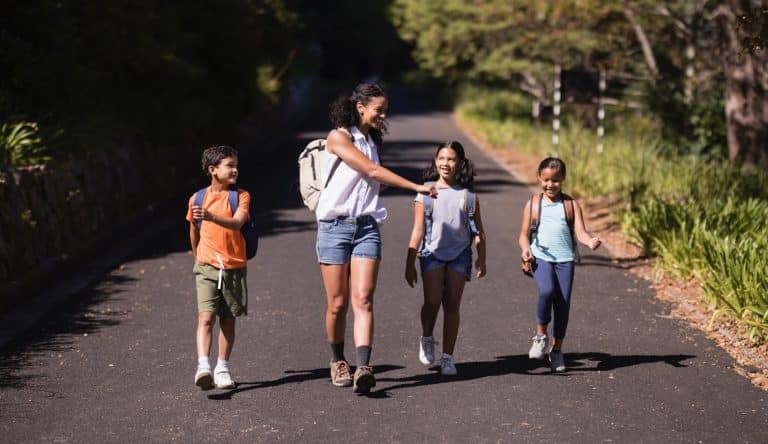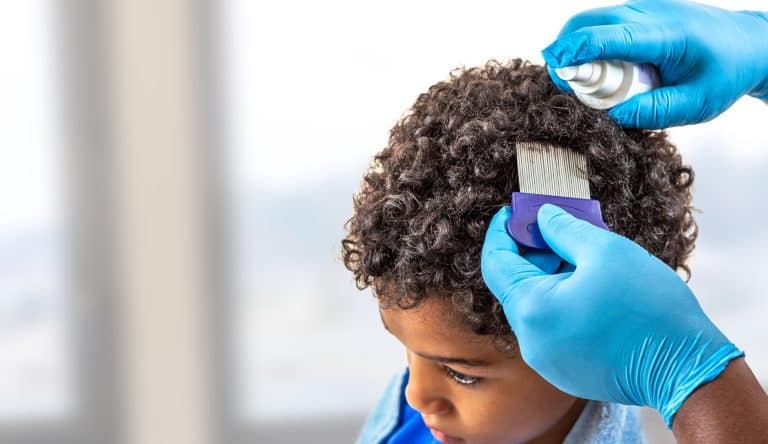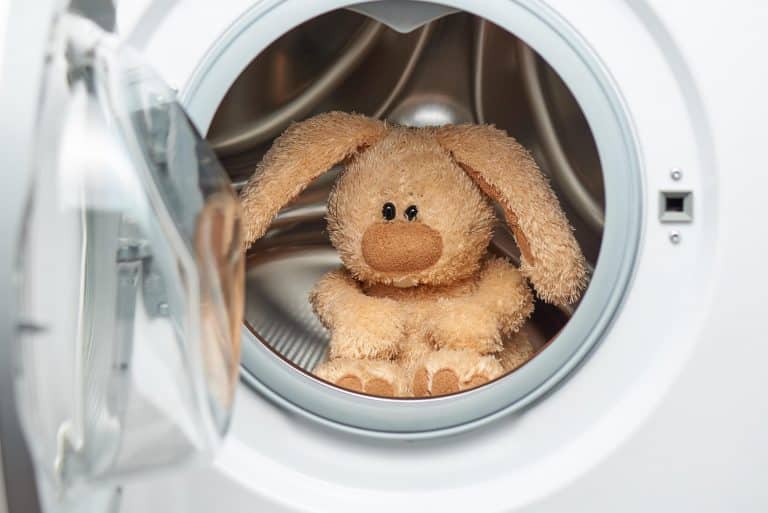Lice are tiny insects that feed off the blood of humans. They cause itching and irritation around their feeding site. Most commonly found on children’s heads, lice prefer dark areas such as underarms, behind ears, neck, and other areas. Signs of head lice may take two to three weeks to appear after becoming infested.
Head lice is an invasion of the hair and scalp by a small, wingless insect called Pediculus humanus capitis. The most common form of transmission is head-to-head contact in addition to contact with infested brushes, hats, towels, pillows, carpets, stuffed animals, and sports uniforms.
The three forms of lice are the nit, the nymph, and the adult louse. Nits are lice eggs and are hard to see. Later the nit hatches into a nymph. To survive, the nymph feeds on blood. The adult louse is the size of a sesame seed and grayish-white in color. It can live up to 30 days on a person’s head.
The adult louse is female and lays hundreds of eggs during its lifetime. These parasites can cause severe itching in areas where they attach themselves to the hair shafts. The intense itching may be accompanied by a stinging sensation or burning sensation caused by chemicals secreted from their mouthparts as they bite into the skin.
Squeezing or scratching an area with active infestation often results in strings of nits (lice eggs) attached to strands of hair, causing the further spread of lice if not removed each time this occurs. If no treatment is used, the cycle will repeat itself around every one to two weeks until few lice remain alive. Severely infected people may have over 100 live adults on their heads at a time.
Head Lice Symptoms
Symptoms of head lice carry many different signs and symptoms. These include soreness in the scalp or hair area. Headaches can be caused by an allergic reaction to the saliva present on human hair from being infested with lice. The most common symptoms of head lice are intense itching, swelling, and scabs on the head. Scratching is a common response to the irritation caused by these parasites. It can lead to secondary bacterial infections that cause abscesses or pustules on the scalp.
Other symptoms include redness in areas further away from infested hair, such as around ears, cheeks, and eyes due to scratching and rubbing. Headaches are prevalent, and fever is due to hormonal changes that occur when the body’s immune system begins reacting against them.
A rash may be present around the feeding site or created by scratching at the biting site. Hair loss could either be due to dead nits(lice eggs) coming into contact with your hair, causing it to fall out, or due to excessive scratching and picking due to irritation from a head louse bite. Lice might cause itchiness, general discomfort, area rashes, or other emotions such as embarrassment among children infested with them. Head lice are most commonly found in children and teens but can occur at any age.
If your child is displaying any of these signs, make an appointment with Lice Lifters immediately so proper treatment plans may be set up for their comfort and safety.
Searching for Head Lice Eggs
The nit is hard to see, so it’s important to examine your child’s hair closely using a magnifying glass or other visual aid that will help you locate these spots very quickly. These eggs are usually oval-shaped with a thin transparent shell covering them closely resembling dandruff, so many people miss their presence on the scalp. Nits should be treated if present because even one egg left could result in an outbreak of numerous nymphs over time.
The nymph is visible to the naked eye and resembles a grayish-white-colored adult louse. They are semi-transparent with pointed back ends that stick out from the hair shafts. The only way to tell if your child has a head louse infestation is by examining your child’s scalp closely for nits or nymphs using a magnifying glass for best results. Modern technology offers new ways of locating this parasite, one being called “Wood’s Lamp,” which works on the principle of detecting fluorescent light emitted by chemicals in human skin secretions.
Lice eggs are small and stick well to hair. They resemble dandruff, so it is easy to miss them even when you may be examining your child’s head regularly. The best way to prevent head lice is by using common sense and practicing good hygiene habits.
Head Lice Removal
The best way to remove head lice and eggs is with a special comb designed for this purpose. These combs are found at any Lice Lifters treatment center. Another way is to shave your child’s hair, but the possibility of damaged tissue is probable should you decide on this method. In almost all cases, we do not recommend shaving your hair. Trained technicians should complete these processes to avoid pain, discomfort, and repeat infections.
Preventing Head Lice Head
There are many ways to prevent becoming infested with head lice. The most effective way is by not bringing them home. If you have had contact with someone who has lice or lives in an area with a high risk for these insects, it is important to inform others responsible for your children of the possible issue. Such people include school bus drivers and other staff members, including gym teachers or any person involved with your child’s extracurricular activities. Other precautions may include teaching children not to share brushes, hats, combs, or anything they place on their heads.
Heads should be checked every day for signs of itching or irritation in the hair, scalp, or ears. What often happens is that a parent will check their kid’s head only at night before bedtime and not during the day as they are going about their day-to-day activities away from school, such as after sports practice or at friends houses.
Head Lice Treatment With Lice Lifters
Lice Lifters have been tested and proven to kill the head louse. Unlike other products, Lice Lifters do not leave behind toxic residue or fumes in your hair like some other products do. It is a non-staining, odorless, water-based product that works great with hard-to-get places such as behind the ears and around the scalp of children’s heads.
Lice Lifters works by simply lifting the insect from their feeding sites after coating all areas of the hair shafts with it. The essential oils contained within Lice Lifters quickly break down any shellac encasement material and suffocates them. This makes for an easy removal process without handling or crushing an insect which could cause you to be infected with their saliva.
If you want to learn more about how to get rid of head lice, visit our website today! We offer free consultations and can answer any questions you might have regarding head lice treatments.




